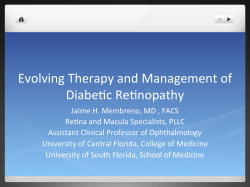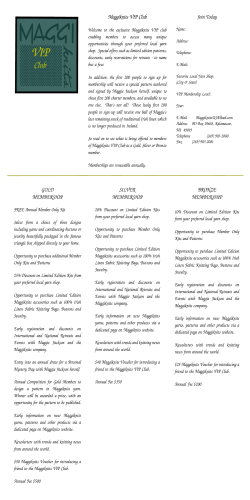
Essay Question 1: Discuss the Shoemaker Treatment Protocol
Essay Question 1: Discuss the Shoemaker Treatment Protocol 1. Remove exposure and decrease ERMI below 2. This is the first, hardest and in my experience most difficult step to achieve. There does not appear to be a one size fits all way to approach remediating the environment. Finding the source of water damage, repairing it and then cleaning with HEPA vacuum, IQ Air (removes particles to .003 size) and hydrogen peroxide as well as removing permeable possessions is the general outline. I have come to believe most so called remediation companies get by with the shoddy work they do only because three quarters of their customers are not sensitive to mold! The Environmental remediation score from www.mycomtrics.com gives a quantitative measurement of the fungal DNA in a building. An ERMI below 2 signifies that a building is safe for patients with a C4a below 20,000 and MSH less than 35. If the C4a is above 20,000 and MSH below 35 the ERMI needs to be -1 (have never seen that score). Patients must have an ERMI below 2 to start the VIP protocol since VIP is not effective in the face of mold exposure. There is a learning curve for how to avoid reexposure. 2. CSM/Welchol CSM binds its ammonium cation to anion dipole structures in the duodenum and escorts the bound complex out of the body, preventing enterohepatic recirculation from the bile. CSM is best taken at least four times a day, 1 hour after supplements and meds and at least ½ hour before food in order to catch bile from sphincter of Odi. Doing this four times a day is best but a little difficult, but many can achieve three times a day. Common side effects are constipation and gas. I have found that adding mag citrate powder to the “Mold Shake” for patients with known constipation is very helpful. Welchol has 20 percent of the binding sites but is so much easier to take. For increased compliance patients can try CSM morning and bedtime, and Welchol at lunch and dinner. Questions about how long do I have to do this are best deferred, or referred back to step 1. I prefer not using aspartame in people who already have anxiety or depression. Some patients who have been on Candida diets forever are phobic about sugar, or others are sensitive to any additives, and so I often prescribe the CSM from Hopkinton which contains only stevia. 3. Eradicating MARCoNS Multiple antibiotic resistant coagulase negative staph contribute to the immune dysregulation by cleaving MSH with exotoxin A. MSH production has already been decreased by the leptin blockade at the hypothalamus, and this adds further insult to injury. Without MSH, of course, multiple neuro immune pathways become disturbed including ACTH, cortisol, androgens, melatonin (sleep), endorphins (pain), GI (MSH receptors in gut) and cytokines. In the biotoxin patient Colonies of these bacteria cluster together in biofilm shielding which makes eradication very difficult. Diagnosis is through nasal culture. If the culture is positive with 2 or more resistant antibiotic classes the recommended treatment is BEG spray 2 prays in each nostril three times a day for a month. Rifampin 300 mg bid for 1 month amy be used in resistant cases. The EDTA in BEG spray breaks down biofilms. Rifampin needs to be used cautiously in patients on a blood thinner. After treatment the culture needs to be redone – cannot assume eradication! This step is extremely important for future success with the treatment pyramid, especially if VIP is considered. 4. Correct antigliadin Autoimmunity is very common in CIRS. Gliadin antibodies are positive in over half the children with CIRS (58%) , as well as many of the adults (33%). There may be an association with the mold genes 7-2-53 and 17-2-52A (DQ2). Anticardiolipin, antiactin and ANA can also be present. At minimum patients’ need 3 months off gluten if they test positive for gliadin sensitivity. I tend to recommend most people in general are better off gluten free not only from a gliadin sensitivity standpoint but also from a need to decrease carbohydrate intake so I do not suggest restarting the gluten If people do restart gluten I ask them to keep a diary of GI symptoms, and if they worsen again on challenge I will encourage staying gluten free. 5. Correct Androgen’s MSH disrupts the whole HPA axis leading to dysregulation of the gonadotropins, lowered endorphins and ACTH, which then leads to lower cortisol and testosterone among other things. The lowered testosterone is usually due to up regulation of aromatase, and giving more testosterone only leads to the production of estradiol, which is not helpful in men, and may lead to estrogen dominance in women being treated with bioidenticals hormone therapy (I saw that recently and was able to stop the other practitioner from further increasing the female patient’s testosterone replacement). In women you can see endometriosis, dysmenorrhea, interstitial cystitis and vulvodynia. Using DHEA may be helpful since it is metabolized to testosterone. The problem with lowered cortisol comes from the decreased ACTH. Giving exogenous cortisol, especially steroids, can depress the ACTH even further and lead to real damage in the patient’s ability to ever synthesize cortisol again. I have used adrenal supplements with herbs for symptomatic relief with some success with the understanding that the only real correction of the hormone problems lies in correcting the underlying inflammation. I have referred several younger men for HCG therapy with a hormone “specialist” and have seen some moderate improvement from the 100’s to high 200’s in testosterone levels. High androgens may be protective of CIRS. I have consistently noticed that men, even with the same biomarker numbers or worse than their wives, complain less and don’t have the same degree of functional impairment. 6. Correct ADH/Osmolality ADH, which is secreted from the posterior pituitary, is damaged through the same mechanism as described above, low MSH. Low antidiuretic hormone dysregulation leads to increased thirst, frequent urination and static shocks (increased salt on skin). DDAVP .2mg every other day for two weeks, or .1 mg every night, can be helpful. Need to watch weight gain with fluid retention, serum osmolality and hyponatremia. This may help migraine headaches from volume depletion. DDAVP can also help nosebleeds. Losing water continually since there is no antidiuretic hormone to conserve water may lead to the apparent side effect of weight loss. Replenishing ADH may result in more water retention, which is really a good thing from the standpoint of the total organism and healing. 7. Correct MMP-9 MMP-9 is an enzyme that dissolves the basement membrane of endothelial cells and allows the inflammatory compounds to leave the blood stream and enter nerve, muscle, brain and joint tissue where they cause severe pain and inflammation. Actos, fish oil and a low amylose diet are helpful. Actos needs to be used with a low amylose diet to be successful. Amylose (converted by amylase in saliva) is a source of glucose for developing seeds and roots. Actos also now has a black box warning of bladder cancer, but may still be usefull short term for severe inflammation. High dose fish oil from 4 to 8 grams can be very useful. High MMP-9 patients may get worse when starting CSM, and Herx reactions often involve an increase in MMP-9 with a fall, or worsening, in row E of the VCS test. 8. Correct VEGF VEGF is vascular endothelial growth factor which stimulates blood vessel growth in response to a signal from HIF (hypoxia inducible factor). In normal people this corrects hypoxia by dilating blood vessels. In biotoxin patients the high cytokine levels suppress VEGF, often leading to levels less than 31 (i.e. can’t be found). Interestingly enough high VEGF, or increased capillary growth, is associated with tumor formation, so possibly low VEGF is cancer protective. On the downside however low VEGF means there is no way to increase blood flow during exercise which, along with using up glycogen stores during exercise, may be one cause of “post exertional fatigue” associated with a chronic fatigue diagnosis. In addition persistent capillary hypoperfusion will lead to cognitive difficulties and persistent aching. Again Actos or high dose fish oil can be helpful, as well completing all the previous steps, especially re exposure. 9. Correct C3a C3a is an activation product of C3, and is elevated in Lyme due to activation of MASP2 on bacterial membranes. It can be lowered with high dose statins (Zocor 80mg/day). CoQ10 150mg can help with any muscles pains from reduced hmg coa reductase leading to reduced CoQ10. 10. Correct C4a C4a is the activated product of the C4 complement cycle. It is a putative anaphylatoxin that activates mast cells and basophils and increases smooth muscle contraction, vascular permeability and release of chemotaxic factors. Can see dermatographia (degranulating mast cells) in patients. C4a rises very rapidly on the first day or reexposure on the SAIIE (Sequential Activation of Innate Immune Elements) trial. High C4a is associated with cognitive deficits, fatigue and restrictive lung disease. If c4a runs above 20,000 an ERMI of -1 is recommended, in part because the auto activation of MASP 2 precludes any self-healing. Each reexposure to biotoxins will cause a more rapid and stronger response of the C4a leading to the term sicker, quicker. Basic treatment is removal from exposure and CSM/Welchol. The Procrit protocol for C4a is 8000u injected 5 times weekly for 2 1/2 weeks, or a toal, then check labs. Feeling better at high elevations, which also increase erythropoietin, may be a clue that Procrit will be helpful. The black box warning of increased mortality and serious cardiovascular events, as well as high cost and restricted use make this a third tier treatment. 11. TGF-Beta 1 TGF beta transforms cells. In lung it transforms columnar epithelial cells to thick fibroblasts. Think TGFB 1 with autoimmune, MS and children with disabilities. High TGF beta is associated with abnormalities in T reg cells, hypermobility and 11-3 – 52B. High TGF b can lead T cells to differentiate into TH17 (along with Il 6). TH17 are pathogenic T cells that are associated with autoimmunity and collagen induced arthritis. Losartan 25 to 50 mg/day can be helpful. 12. VIP Vasoactive intestinal polypeptide is a 26 amino acid peptide neuro immune modulator. It interacts with MSH and ADH, can down regulate cytokines and can reduce PASP. A recent open label trial by Shoemaker has shown that VIP 50mcg taken intranasally four times a day can reduce symptoms to that of a control population, corrected inflammatory biomarkers of C4a, TGF b, VEGF and MMP-9, corrected estradiol and testosterone in men, up regulated Vit D, returned PASP during exercise to normal and enhance quality of life in 100 percent of patients. However VIP can only bring about these extraordinary results if all of the prior 11 steps of the Shoemaker protocol have been addressed, especially making sure that there is no environmental exposure in the home or workplace, that VCS is negative and that MARCoNS is treated. I have recommended 12 patients for VIP. It has only been successful in 5, all of whom mostly noted that their ability to exercise had markedly improved, along with their labs. In the other 7 “hidden” mold exposure caused an aggravation of TGF beta and was stopped while remediation progressed. Based on this experience I am now insisting on an ERMI of 2 before writing the prescription rather than taking the patients word for it. In fairness in 3 of the patients the hidden mold exposure was their gym or workplace, not home. Suggested additions to treatment protocol might be: Recognition and differential diagnosis: I would add this to the bottom of the pyramid. As you well know most biotoxin cases see many doctors and are continually misdiagnosed. It is an exceedingly common illness, not at all subtle or rare, once you know how to look for it. Suspecting it, learning to recognize the pattern of “diffusely positive ROS” and adding it to the differential is the key. In my opinion diagnosis is the most important step in treatment since there can be no effective treatment without diagnosis. It is also the hardest to learn, since mold illness in a general practice presents in so many ways. I have begun to keep a record of how many times I have been fooled, and how many visits it has taken me to catch on this is a biotoxin patient because I am thinking the patient who has just talked my head off with OCD or bipolar symptoms “is clearly a psychiatric patient”. The patient tells you what he/she thinks you want to hear, having been well trained that you are allowed only one complaint per physician visit. Most think a psychiatrist only wants to hear about the depression, phobias, suicidal thoughts and anxiety, and neglects to mention the chronic diarrhea, sinusitis and rashes, sometimes even when asked. Repetitive questioning, especially for exposure to WDB, is the key Psychological support for intense maladaptive reactions to the diagnosis of CIRS and marital or family discord from “moldy brains” who are overwhelmed with the need for cleaning their environment, the anger at discovering mold in their homes, the disappointment at having a genetic illness that only be managed, not cured etc. I have not had any follow that path yet, but I do send a good percentage of them to marital therapy and counseling. I have seen many maladaptive reactions to the news that HLA genetic configurations can only be managed, not cured, and that the treatment for CIRS starts with remediating the immediate environment. I have 2 psychologists in town with severe biotoxin illness I refer patients to and who may be starting a support group for mold. Although not as easy to measure as perhaps giving VIP I see that my patients who are either psychologically stable or who are in counseling seem to have better success in making their way through the rest of the treatment pyramid.
© Copyright 2025





















